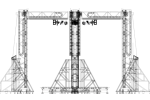
Rosotics Shifts Focus: Halo System Privatized for Spacecraft Production
3dprintingindustry.com
Rosotics, a former U.S. developer of metal 3D printers, has announced that its Halo system, a large-format metal 3D printer, will cease commercial sales and be consolidated internally to support the production of its orbital transfer vehicles. With this transition, the company seeks to evolve from solely manufacturing launch vehicle hardware to becoming a fully complete operator in autonomous space infrastructure, said Christian LaRosa, Founder and CEO, Rosotics.Every great name in additive manufacturing that exists today became a great name because of what they used it to do. We dont plan to ignore the potential we see here, and that will demand a lot of hard choices to realize. The scope of what we intend to do in orbit will require us to be led and operated under a sole focus, and that is as a space company we plan to win the race to industrializing space, said LaRosa.Backed by Silicon Valley venture capitalist Tim Draper and recognized by Venture Capital Fund Sequoia Capital and Venture Capital Firm Andreessen Horowitz (a16z), Rosotics has secured US$2.6 million in funding to advance large-scale metal 3D printing. The Halo platform has drawn attention from companies like Relativity Space and RTX, as well as Jim Cantrell, who was part of SpaceX and served as Elon Musks early mentor.Key Features of the Halo SystemHalo is a large-format metal 3D printer, dubbed the worlds first supercreator. This term was coined by the company to highlight its ability to directly interface with materials science through adaptive code. Halo is not a 3D printer in the traditional sense; it goes beyond being just a tool. It redefines the concept of 3D printing. This system has the ability to control metallurgical science through a deep understanding of materials, representing a significant leap in the evolution of creation technology, said LaRosa.A key feature of the Halo system is its multi-phase electromagnetic process, which replaces traditional laser-based techniques. This process is driven by a print head assembly called Mjolnir, named after Thors hammer. Each Halo unit is equipped with three Mjolnir heads, mounted on freestanding towers supported by multi-axis gimbals. The company explained that the platforms control system, HalOs, incorporates industrial intelligence to monitor and adjust the deposition process, ensuring stability and precision during operation.Rosotics Restructuring and Future Aerospace InitiativesCEO LaRosa announced the departure of Co-Founder and COO Austin Thurman, alongside the companys decision to relocate its headquarters from Mesa, AZ, to Cape Canaveral, FL. In this new phase, Rosotics is actively recruiting talent to support the growing demands of vehicle production and spaceflight operations. The company also intends to streamline its maritime sector operations through strategic partnerships, shifting its focus toward space exploration.Rosotics announced it plans to deploy multiple autonomous spacecraft that will execute a maneuver around the Moon before entering orbit at the L5 Lagrange point, a stable gravitational position between the Earth and the Moon. These spacecraft, featuring large 3D-printed, unpressurized hulls, will transport smaller vehicles to L5 and later be repurposed to aid in the construction of an orbital station. Initially functioning as a propellant depot, the station will expand over time to include power generation and materials processing capabilities, all while remaining at the L5 point without the need for fuel to maintain its position.3D Printing for Space ApplicationsAlthough Laser Powder Bed Fusion (LPBF) are the most widely used metal additive manufacturing systems, other 3D printing technologies are also used for specific applications. Kansas City-based startup Raven Space Systems is focusing on addressing the demands of aerospace, space, and defense applications with its proprietary Microwave Assisted Deposition (MAD) 3D Printing technology. The company claims that its patented process enables scalable direct ink-write (DIW) 3D printing of aerospace-grade thermoset and preceramic composite components.According to Raven Space Systems, MAD technology holds promise for the production of hypersonics, propulsion vehicles, reentry vehicles, satellites, aircraft, missiles, and space rockets.Elsewhere, satellite telecommunications company AscendArc has secured US$3.95 million in pre-seed and seed funding to further develop its satellite communications technology. This announcement follows AscendArcs recent partnership with OPTISYS, an industrial engineering company focused on developing a 4.5-meter dish with a high-performance horn antenna. The collaboration integrates 3D printed radio frequency (RF) components from OPTISYS, combining precision engineering and advanced manufacturing techniques to enhance satellite signal performance.What 3D printing trends should you watch out for in 2025?How is the future of 3D printing shaping up?To stay up to date with the latest 3D printing news, dont forget to subscribe to the 3D Printing Industry newsletter or follow us on Twitter, or like our page on Facebook.While youre here, why not subscribe to our Youtube channel? Featuring discussion, debriefs, video shorts, and webinar replays.
0 Comments
·0 Shares
·44 Views


